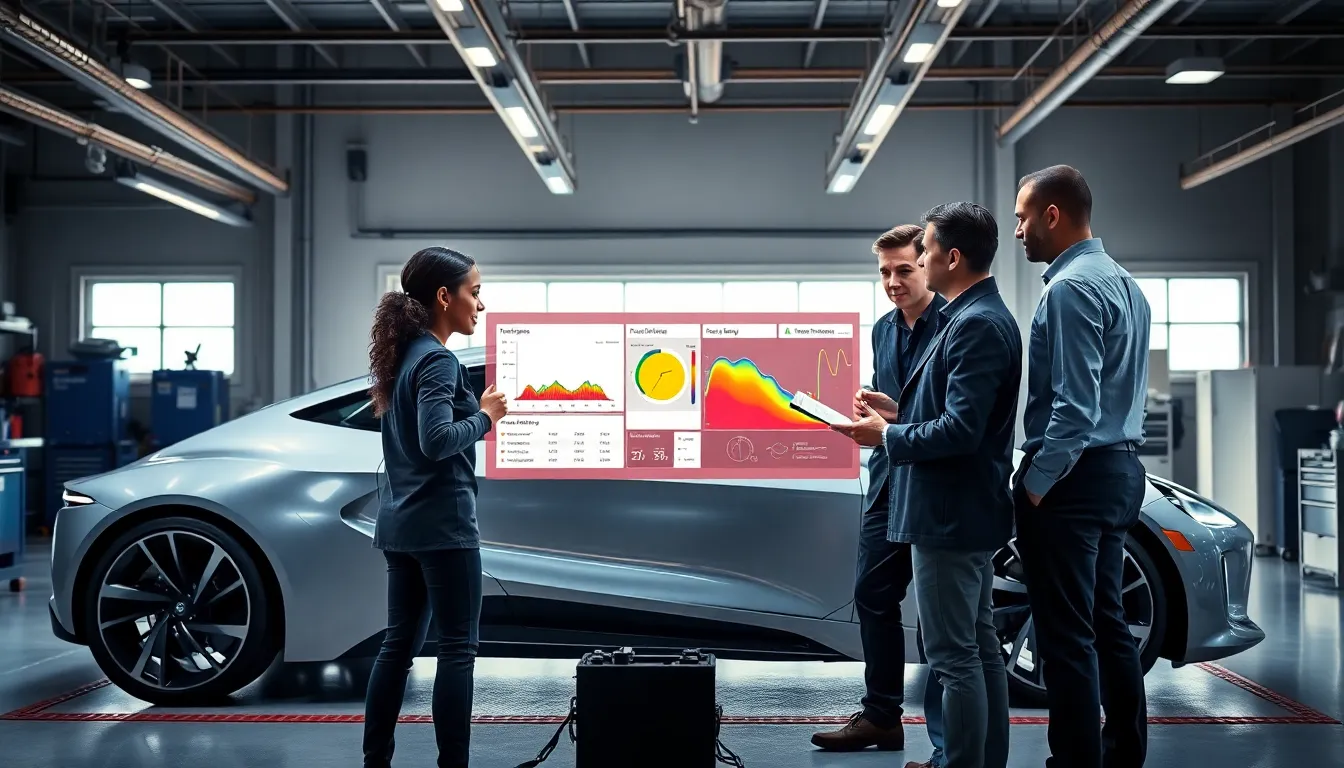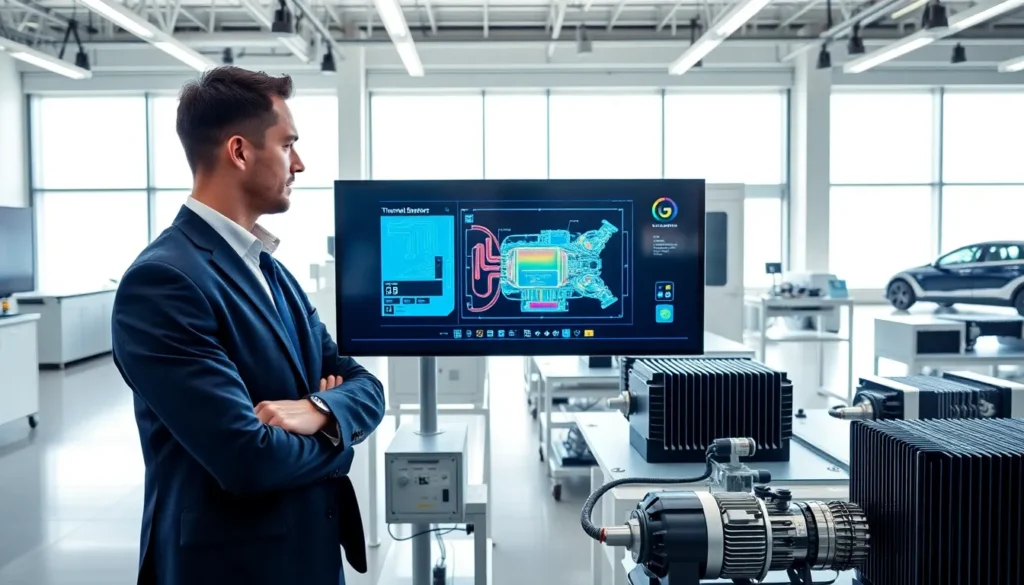Table of Contents
ToggleIn the thrilling world of electric vehicles (EVs), thermal management is the unsung hero doing the hard work behind the scenes. Think of it as the EV’s personal air conditioning system, keeping things cool, calm, and collected, even when the road gets hot. But why should anyone care? Because without proper thermal management, your shiny new EV could end up more like a roasted marshmallow than a sleek roadster. Buckle up, as we jump into the science and technology that ensures your ride stays cool under pressure.
Understanding Thermal Management Systems

Thermal management systems are pivotal in maintaining optimal operating temperatures in electric vehicles. These systems regulate heat generated by various components, including the battery, motors, and power electronics. An efficient thermal management system ensures that each element operates within a predefined temperature range, preventing overheating or excessive cooling.
At the heart of these systems are thermal management strategies that determine how and when to distribute heat. These strategies use various methods such as liquid cooling, air cooling, and phase change materials. By harnessing these technologies, manufacturers can create systems tailored to the demands of high-performance electric vehicles.
Importance Of Thermal Management In EVs
Why is thermal management such a hot topic? For starters, it directly impacts the efficiency, performance, and lifespan of electric vehicles. High temperatures can lead to battery degradation, reducing the overall range and performance of the vehicle. Conversely, excessive cooling can prevent the battery from reaching optimal performance thresholds.
Also, thermal management affects the charging speed. Batteries that are too hot or too cold take longer to charge, which can be frustrating for drivers in a hurry. Proper thermal management ensures that vehicles can charge faster and operate more efficiently, maximizing their performance on the road.
Key Components Of Thermal Management Systems
The key components of thermal management systems in electric vehicles include:
- Radiators: Essential for dissipating heat from the cooling system to the outside environment.
- Heat Exchangers: Transfer heat between two fluids, aiding in the temperature regulation of the vehicle’s systems.
- Pumps and Fans: Circulate coolant through the system, ensuring consistent temperatures across all components.
- Thermal Insulation: This helps to maintain desired temperatures by minimizing heat loss and protecting sensitive components from overheating.
- Sensors: Provide real-time data on temperatures within the system, allowing for dynamic adjustments to optimize performance.
Cooling Techniques Used In Electric Vehicles
Cooling techniques in electric vehicles are diverse and constantly evolving. They play a critical role in maintaining temperature balance and ensuring safety. Here’s a closer look:
Innovative Technologies In Thermal Management
New developments like two-phase cooling systems are gaining popularity. These systems use the phase change of a refrigerant to absorb heat more efficiently. They are particularly relevant for the high power demands placed on electric vehicles.
Heat Pumps And Their Role
Heat pumps offer another innovative solution. They provide both heating and cooling, depending on vehicle needs. Not only do they enhance the overall efficiency of thermal management, but they also use waste heat, which further optimizes energy use.
Future Trends In Thermal Management
As electric vehicle technology continues to advance, so too will thermal management systems. Future trends may include enhanced integration of artificial intelligence to predict heat generation patterns and optimize cooling strategies automatically.
Another exciting development is the potential for improved materials, such as enhanced phase change materials that offer greater capacity for heat absorption. These innovations will contribute to lighter, more efficient thermal management systems capable of handling even higher power demands.
Regulatory And Safety Considerations
With increased scrutiny on environmental regulations and safety standards, thermal management is more critical than ever. Regulatory bodies are demanding higher efficiency standards while ensuring that EVs operate safely under varying thermal conditions.
Manufacturers must adhere to these regulations while innovating their thermal management systems. This may involve extensive testing and validation, ensuring that vehicles meet safety benchmarks without sacrificing performance. Authorities are paying close attention to thermal runaway incidents, and effective management systems can mitigate these risks.







